Insights and frequently asked questions
Automated Guided Vehicles (AGVs) are an increasingly important part of production logistics. The high reliability of AGVs makes pallet transportation within warehouses and factories more efficient, safer and more reliable. Employees are scarce while production capacity often needs to increase. This makes implementing AGV pallet robots and integraded systems more relevant than ever.
Deploying AGVs or AMRs has an immense amount of aspects. This page provides insight and answers to the most common questions about these vehicles and the automation of pallet flows in production environments based on our experience of over 350 turn-key projects.
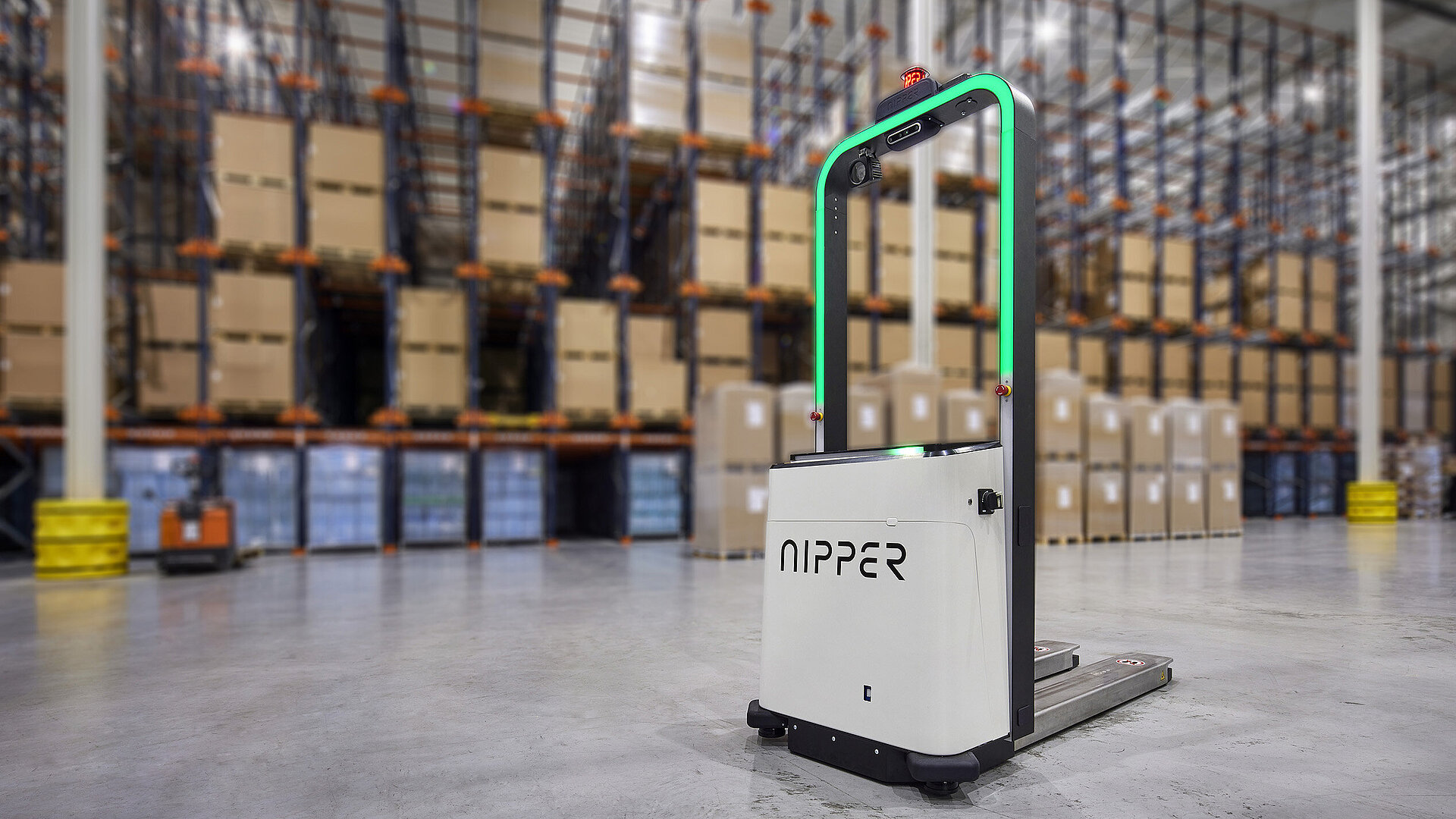
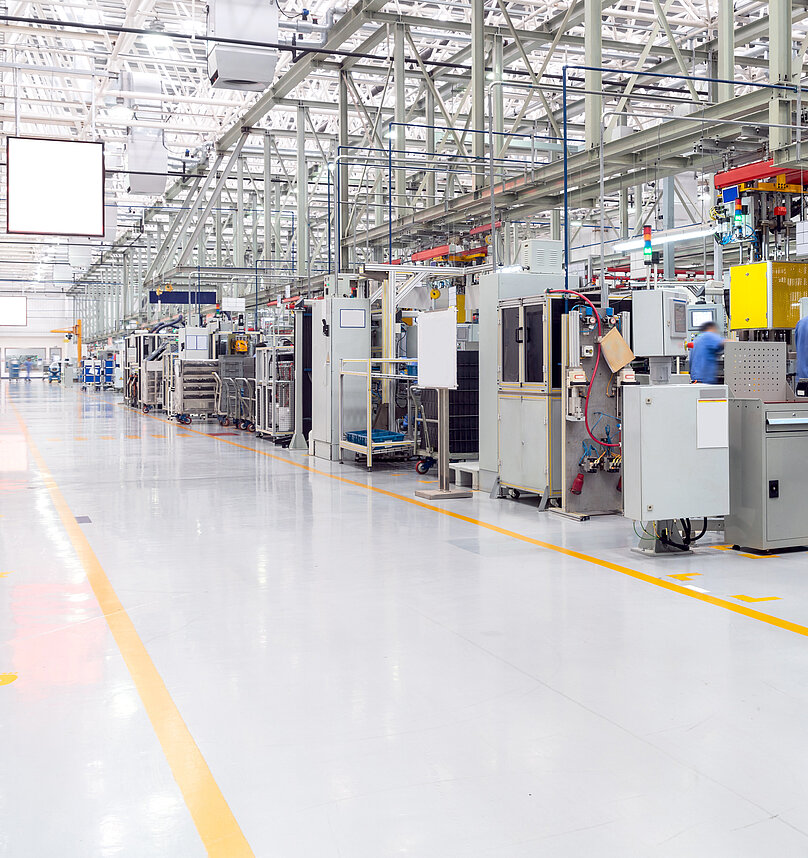
AGV
(Automated guided vehicle)
An AGV is an unmanned, computer-controlled load carrier that moves through an area such as a factory or warehouse. In doing so, the robot follows a path that is predetermined. Magnetic strips, wires or sensors are generally used to navigate along this path. The advantage of navigating along a predetermined route is that the pallet robot always uses the most efficient route and is also very predictable. The accompanying disadvantage is that the factory has to be specifically set up with (mostly) expensive hardware for the AGV to navigate successfully. When the factroy setup changes, the hardware also has to be adjusted to create new routes.
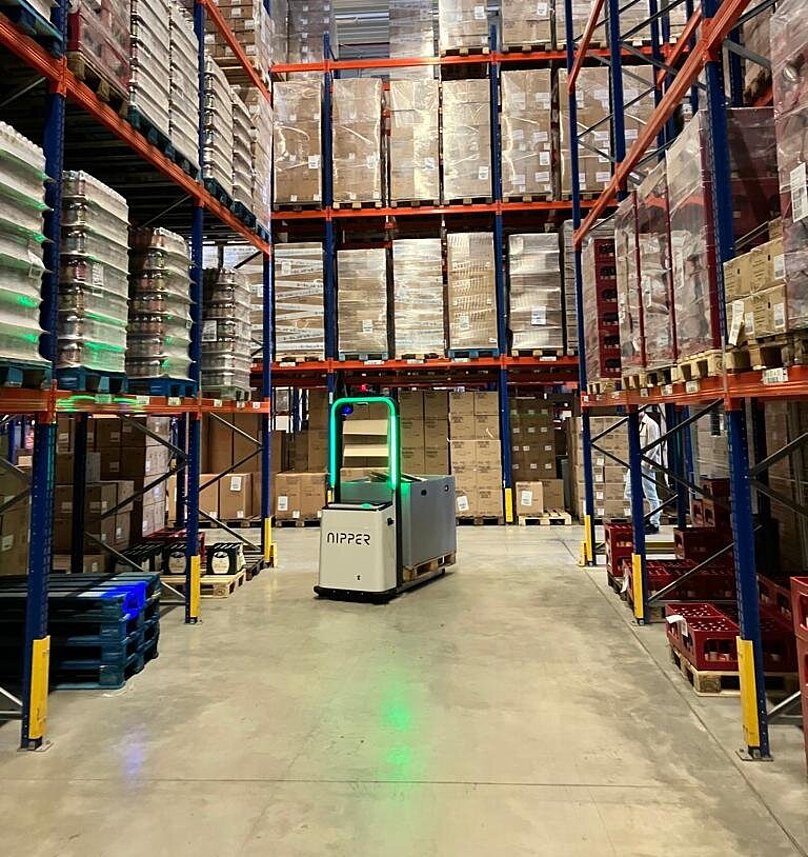
AMR
(Autonomous Mobile Robot)
An AMR serves the same purpose as an AGV, however, the AMR calculates the route from A to B independently based on software. When an AMR encounters an obstacle, the pallet robot will calculate a new route and go around it. The advantage of this is that AMRs are programmable based on the layout of the factory in a flexible way which makes it particularly attractive for dynamic production environments.
Although the AMR can drive around obstacles, this can also be seen as a disadvantage. Bypassing obstacles takes time and therefore lowers efficiency as there is no control over the AMR's route. In addition, in tight spaces, it is not possible to swerve to an alternative route and AMRs are therefore less ideal for facilities with a lot of tight spaces.
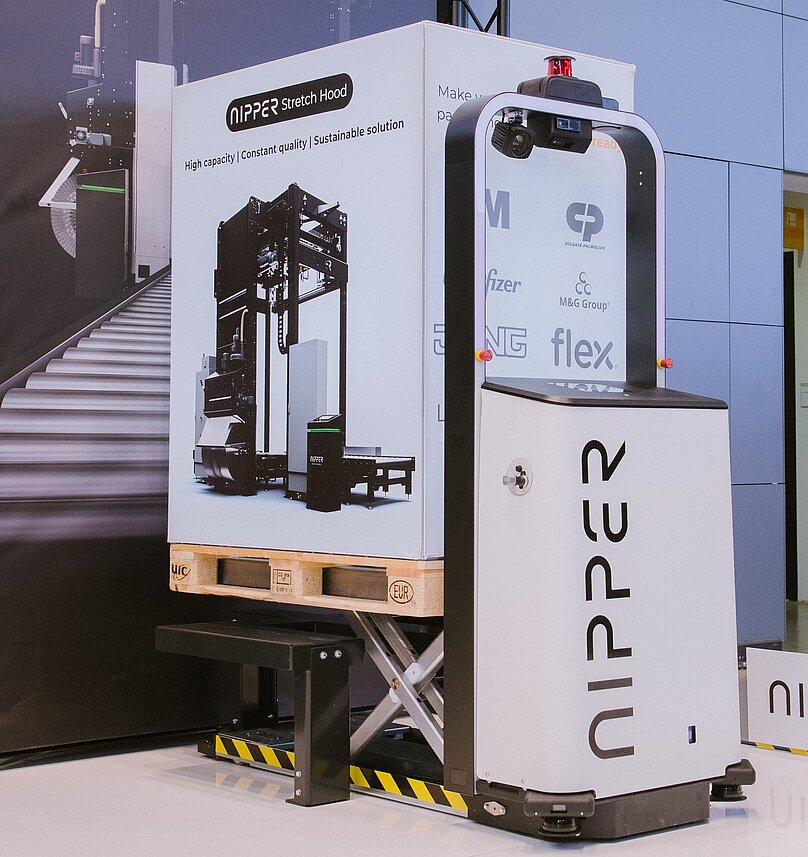
The best of both worlds
Both AGV's and AMR's are not perfect solutions. Whereas an AMR is more flexible, an AGV has higher efficiency. In an ideal situation, a pallet robot has the flexibility and navigation capabilities of an AMR where there is no dependence on external hardware such as magnetic strips but with the efficiency and safety of fixed routes of an AGV.
The Nipper AGV was developed specifically to solve this problem. The Nipper AGV does not rely on additional hardware but uses preset digital routes, this ensures a high degree of efficiency and flexibility. For example, should an additional production line be added, the AGV's routes are easily adjusted without additional investment. This ensures a strong balance between flexibility and efficiency.
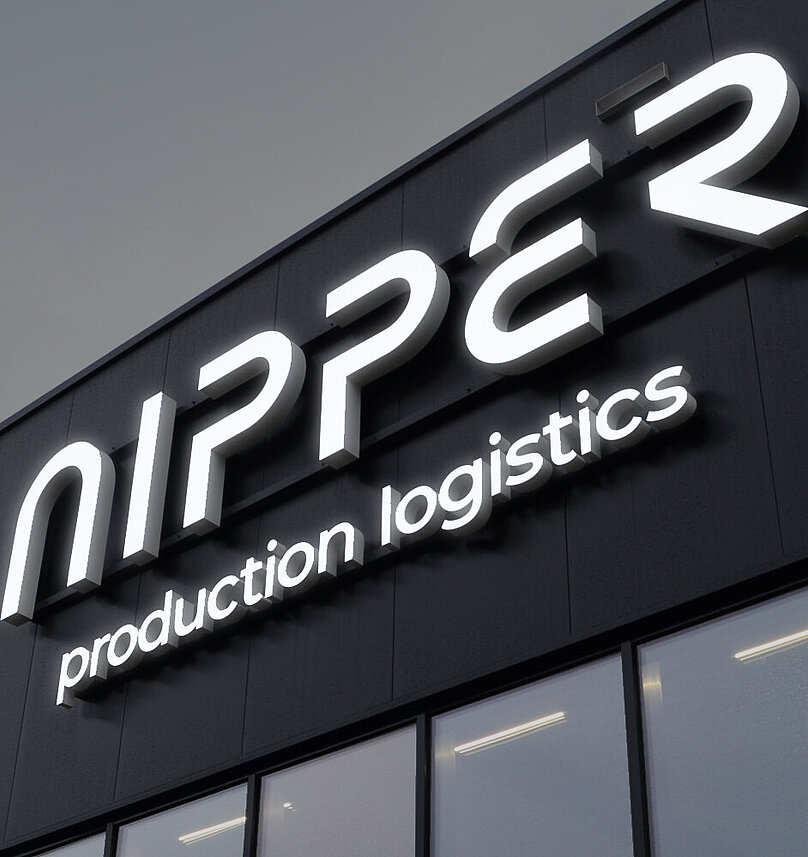
Are you ready to atuomate your business?
Curious to see how to go about automation for your factory? We are happy to answer all your questions.
What should you look out for when buying an AGV pallet robot?
Capacity and cycle time
When choosing an AGV pallet robot, capacity and cycle time determine the final efficiency. How many pallets should the system be able to process per hour? And how quickly should a task be completed to not slow down production? To determine how many vehicles are needed, look at the average number of load carriers to be transported per hour or per shift. Don't forget peak times either: how much does production increase during busy periods? Crossing this required capacity with the expected cycle time per pallet will give you an insight into the number of AGVs needed to automate your process reliably and efficiently.
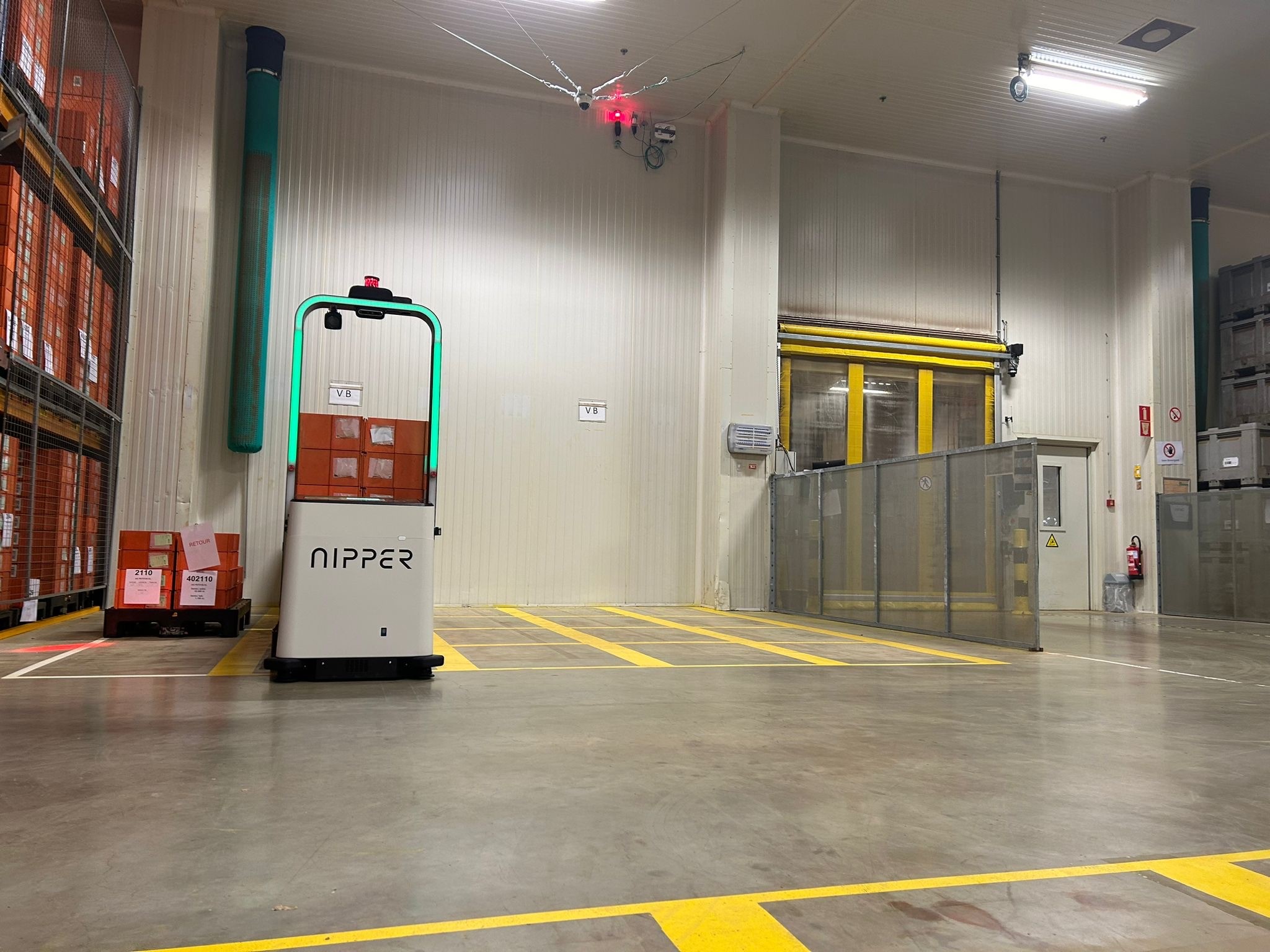
Lifting capacity and dimensions
Determining the lifting capacity and dimensions required are essential for choosing the right pallet robot. Check in your production environment what the maximum weight of the pallets to be transported is. Almost all AGVs have a maximum lifting capacity, so it is essential to take this into account.
It is also important to consider what the dimensions are in the environments where the AGV needs to operate. Look at the full route the vehicle has to take, looking at the narrowest sections. Do not forget to consider the layout of the warehouse where the pallets can be placed, as this space is often narrower than the standard passages in the factory. For narrower spaces, an omnidirectional vehicle is ideal. These vehicles can rotate on their own axis, making them more flexible when space is limited.
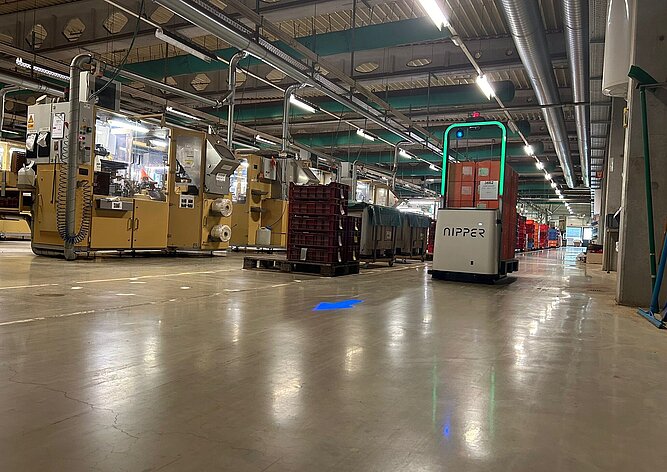
Safety features
An AGV pallet robot operates in an environment where people, machines and goods intersect. This is precisely why good safety features are not a luxury, but a requirement. When buying, pay attention to things like 360º obstacle detection with safety laser scanners, emergency stops, speed limitation and automatic braking systems. In addition, hallmarks or certifications such as ISO 3691-4 are an important sign that the vehicle is safe to use in your production environment.
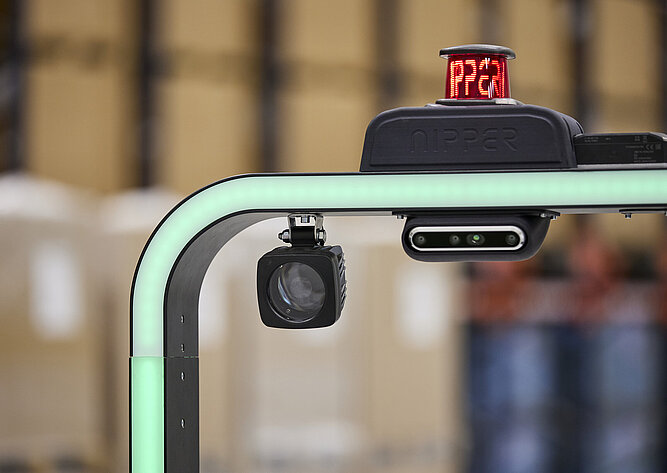
Service, support and updates
Purchasing an AGV is not a one-off investment but the beginning of a long-term partnership. Reliable service, quick support and regular software updates are essential to keep your AGV system safe, stable and future-proof. It is important to choose a supplier that can also offer support in maintenance, spare parts and online or local support in case of failure.
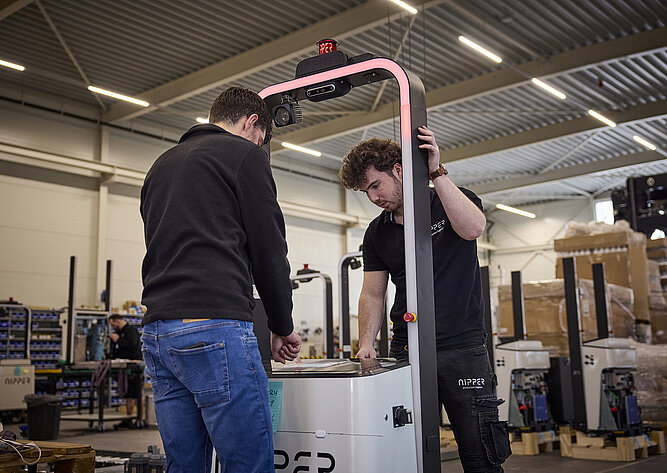
Cost and ROI
Don't just pay attention to just the cost of an AGV but also include maintenance in your cost analysis. Compare these total costs with the current staff costs or the cost of expansion if filled by human resources. Do not forget to include holidays, sick leave and acquisition costs to paint an accurate picture of the situation.

Automation with AGV pallet robots: Practical examples
Incoming and outgoing goods
AGVs automatically feed production lines with raw materials, collect finished goods and take away waste or residual material to the designated location.
From production to warehouse
When the finished goods are collected on pallets, AGVs can automatically pick up these pallets and transport them to the right place in the warehouse.
Inbound & outbound logistics
AGVs take care of transporting incoming goods at the loading dock directly to storage and vice versa from the warehouse to outgoing docks.
Benefits of automation
The benefits below are especially great in environments where there is a lot of repetition and predictability, for example in the food, pharmaceutical or plastics industries.
As AGVs take over the repetitive transport of pallets, labour costs are reduced and staff shortages are solved. 1 AGV can take over the work of up to 5.4 FTEs, depending on the production environment and planning.
New AGVs can easily be added to the fleet without major disruptions to the process. This makes it easy to scale up the use of AGVs when, for example, production increases. In addition, should changes be made to the production environment, it is easy to adapt the vehicles' routes to the new environment.
AGVs are equipped with advanced detection and warning systems that significantly reduce the risk of accidents compared to traditional forklifts and pump trucks.
This eliminates damages and collisions caused by human error during pallet transport.
Every pallet movement is recorded, so the flow is always visible via dashboards and reports. This enables more targeted steering to further optimise production.
As the vehicle takes over the repetitive tasks from human staff, employees can be deployed where real value is added to the production process.
Frequently asked questions (FAQ)
AGVs save labour costs, reduce damage risks, offer increased safety, are deployable 24/7 and deliver reliable performance.
The robot picks, transports and follows set instructions completely autonomously. By linking to the fleet manager and specific sensors or push buttons, missions (tasks) are started automatically.
An AGV pallet robot is equipped with advanced sensors (such as laser scanners and cameras) and a navigation system.
The robot can recognise pallets via, for example, barcodes or vision solutions. For the most efficient distribution of missions, the central fleet manager system keeps an overview and is in continuous contact with the AGVs. Automatic charging between missions (Opportunity charging) makes it possible to stay active 24/7. With safety systems such as obstacle detection, speed limitation and priority rules, AGVs function safely alongside humans. This makes man and machine a cohesive team.
The migration to automatic pallet handling starts with a thorough analysis of the logistics processes and an inventory of the existing infrastructure. This looks at possible bottlenecks and how an AGV can add the most value. This analysis, also called ‘Factory Scan’, forms the basis of the automation process. Due to its flexibility, AGVs can often be integrated without major structural modifications, except in very outdated warehouses. Training and change management for staff ensure quick acceptance and smooth transition. To fully embrace the automation, an integration with existing WMS or ERP system is essential.
A large proportion of new AGV projects involve retrofit or expansion in existing production environments. This is generally no problem and easily feasable. If you are however building a new production facility, it is of course the perfect opportunity to include automation in the project from the first step.
Look at payload, navigation, integration with software, maintenance and total cost.
The ideal AGV system depends on the layout, type of pallets, capacity required and budget. Therefore, there is no easy answer. To get the best results from automation, it is important to look at the individual factory with, for example, a Nipper production logistics expert. In addition, it is important to choose a system that is scalable and has good service and maintenance support, this ensures that the investment in automation is future-proof.
The exact cost of an automation project depends on the production environment being automated. Contact us for tailor-made advice, free of charge and without obligation.
Highly scalable, the expansion of projects can often be done without major modifications.
Future of pallet robots
Global demand for AGV systems is growing rapidly every year. AGV pallet movers offer a solution to staff shortages, higher safety requirements and increasing logistics volumes. With increasing production pressure, investing in AGV pallet robots is a step towards a future-proof, scalable and competitive logistics operation now and in the decades to come. The future however, goes further than just AGVs. Automation will be applied further and further along the production chain and will also include, for example, pallet packing.
Curious about how your factory can best get started with a pallet robot? Contact us for a free factory scan!

 English (EN)
English (EN)
 Nederlands (NL)
Nederlands (NL)